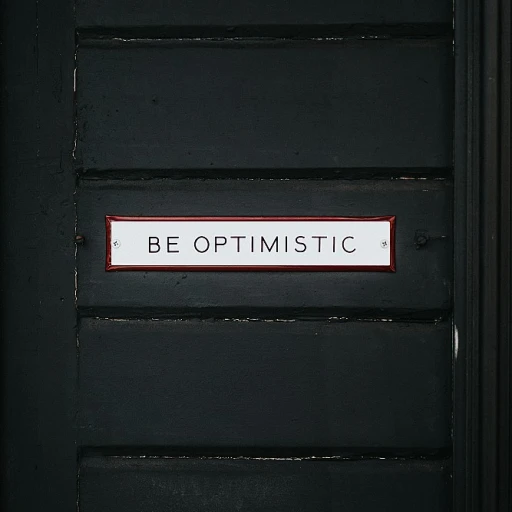
The Importance of Employee Feedback
The Value of Open Channels of Communication
Employee feedback isn't just helpful; it's essential for the growth of any organization. During professional days or team celebrations, it's vital to recognize the hard work and contributions of employees, but equally important is understanding their needs and perspectives. Feedback can drive positive change, enhance professional development, and reinforce employee engagement throughout the year. Open channels of communication cultivate a supportive workplace where mental health and team dynamics are priorities.
As organizations observe various national and international days, incorporating feedback mechanisms can significantly impact workplace culture. Feedback helps professionals and teams to adapt more effectively, ensure compliance, and work towards common workplace goals. Celebrating employee milestones becomes even more meaningful when employees feel their voices are heard and valued. This fosters a deeper connection to the company mission, enhancing overall engagement.
Implementing regular feedback practices and celebrating human resource professionals on their special day can inspire and motivate teams to contribute actively. Encouraging feedback also promotes professional development. Recognizing this dynamic is essential in the modern professional landscape. Organizations can learn from inspiring words on servant leadership, which emphasize the importance of listening and adapting for the betterment of both employees and the organization. This approach ensures that companies remain agile and responsive to the evolving needs of their employees.
Challenges in Gathering Genuine Feedback
Overcoming Obstacles to Genuine Feedback
Gathering authentic employee feedback is crucial for a thriving workplace, yet many organizations face challenges in obtaining it. Professionals in human resources acknowledge the importance of understanding employee engagement and development, but various hurdles often stand in the way. Here's a closer look at some common challenges and how they impact feedback.- Fear of Repercussion: Employees might hesitate to provide honest feedback, fearing negative consequences. This can create a significant barrier, especially in a workplace where open communication is not actively encouraged.
- Lack of Anonymity: In some organizations, employees worry about anonymity when providing feedback. Without the assurance of confidentiality, employees may not feel comfortable sharing their true thoughts on professional development or mental health matters.
- Time Constraints: Day-to-day responsibilities can leave employees with little time for feedback activities. Balancing workload with providing meaningful input can deter many from participating in engagement exercises or team-building efforts.
- Cultural Barriers: In multinational organizations, cultural differences can influence how feedback is perceived and provided. What might be considered constructive in one culture may be taken as criticism in another, impacting employee engagement negatively.
Effective Feedback Mechanisms
Innovative Approaches to Solicit Feedback
In a world where employee engagement is a top priority for organizations, implementing effective feedback mechanisms is crucial. Understanding how to effectively gather genuine insights from employees enables companies to enhance their workplace culture and meet professional development needs. As HR professionals consider various strategies, some tried-and-true methods can be celebrated for their effectiveness.The Role of HR in Facilitating Feedback
The Role of Human Resources in Driving Effective Feedback
Human resources play a crucial role in ensuring that employee feedback is not only gathered effectively but also utilized to improve the work environment. HR professionals help transform feedback from a simple company requirement into an essential element of employee engagement and professional development. One of the primary functions of HR is to act as a mediator between employees and management. By cultivating an environment of trust, HR can encourage genuine and constructive feedback. This mediation is especially important during key dates throughout the year, such as employees’ professional day or various national holidays, when reflecting on team achievements and challenges is paramount. HR teams are often tasked with developing programs and initiatives that facilitate feedback. This might include the creation of surveys, suggestion boxes, or regular one-on-one meetings where employees feel heard and valued. They must ensure that the tools for feedback are user-friendly and that the outcomes are integrated into organizational development plans. Let’s not forget the increasing need for HR to address workplace mental health. By gathering feedback about stress levels, workloads, and job satisfaction, HR can contribute to creating healthier and more productive environments. This aligns with the broader objective of human resources to promote well-being and compliance within the organization. Moreover, HR professionals must remain current with trends and adapt to new engagement ideas. For instance, using technology can streamline the feedback process and foster year-round communication, making it more than just a biannual event. This adaptation can help ensure that feedback remains a central part of the organizational culture, being practiced by all employees throughout the year, and celebrated during periods like the day celebrated in April or mental health awareness month. Ultimately, HR’s role extends beyond just gathering feedback; it is also about driving its value transformations within the company. Through strategic planning and a deep understanding of employee needs, HR can promote a culture that not only values feedback but effectively utilizes it to foster growth and engagement for all team members.Case Studies of Successful Feedback Implementation
Learning from Successful Feedback Practices
In recent years, several organizations have demonstrated the tangible benefits of effective employee feedback systems. These case studies can serve as a guiding light for companies aiming to enhance their engagement strategies and cultivate a supportive workplace environment.
For example, a national company in the technology sector celebrated a remarkable increase in employee engagement by prioritizing timely feedback during team meetings and professional development sessions. By establishing a culture of open communication, employees felt more connected to the organizational goals and were motivated to contribute their ideas and efforts.
Another inspiring example comes from an international day recognized leader in human resources. This organization introduced a comprehensive feedback system that included regular surveys and anonymous input channels. Over time, employees observed their voices leading to substantive changes in workplace policies and team dynamics, driving a notable improvement in mental health across the board.
Moreover, an innovative approach was taken by a human resources firm in restructuring their feedback collection process around key dates such as employees' anniversaries or important national holidays. This created opportunities for personalized feedback, increasing the sense of appreciation and celebration among team members.
These real-world instances highlight the critical role that well-designed feedback mechanisms can play in fostering an engaging and productive work environment. They illustrate the need for continual adaptation and learning to embrace the strengths and unique challenges within each organization.
Future Trends in Employee Feedback
Emerging Trends in Employee Feedback
As we look to the future, the landscape of employee feedback is evolving rapidly, driven by technological advancements and a deeper understanding of workplace dynamics. Organizations are increasingly recognizing the importance of fostering an environment where feedback is not just a formality but a vital component of professional development and employee engagement.
One significant trend is the integration of artificial intelligence and machine learning in feedback mechanisms. These technologies can analyze large volumes of data to provide insights into employee sentiment and engagement levels. By doing so, companies can address issues in real-time, ensuring that their teams remain motivated and productive throughout the year.
Another trend is the shift towards continuous feedback models. Unlike traditional annual reviews, continuous feedback allows for more timely and relevant discussions between employees and their managers. This approach not only enhances employee engagement but also aligns with the fast-paced nature of modern work environments.
Moreover, there is a growing emphasis on mental health and well-being in feedback processes. Organizations are increasingly aware of the impact of mental health on employee performance and are incorporating wellness checks into their feedback systems. This holistic approach ensures that employees feel supported both professionally and personally.
Finally, the role of HR professionals is becoming more strategic in facilitating feedback. As discussed earlier, HR teams are pivotal in creating a culture of open communication and trust. By leveraging technology and focusing on employee well-being, HR can drive meaningful change within the organization.
In conclusion, the future of employee feedback is bright, with numerous opportunities for organizations to enhance their feedback mechanisms. By staying ahead of these trends, companies can create a more engaged and productive workforce, ultimately leading to greater success and satisfaction for all involved.












